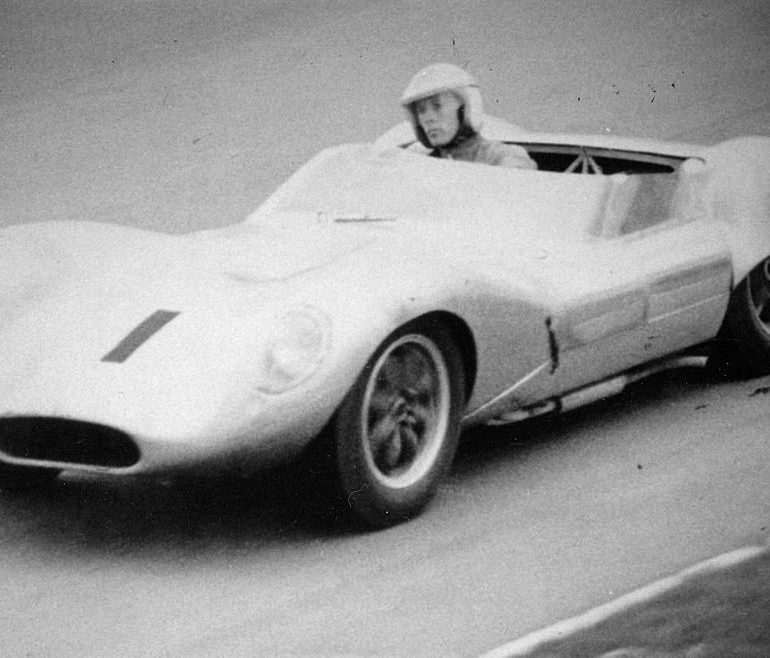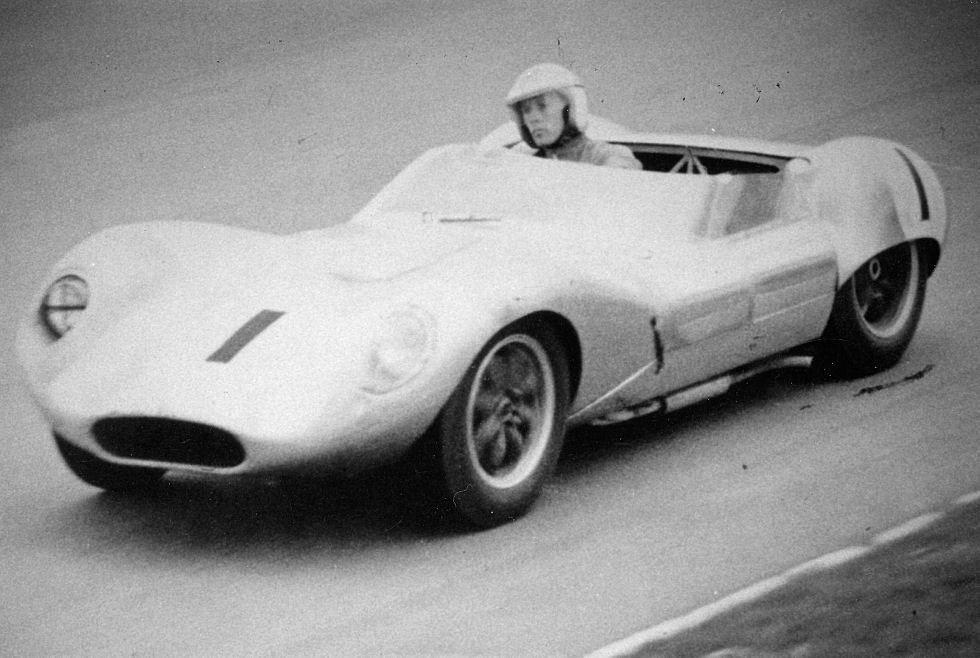1958→1961 Lola Mk1
Right on the tipping point of success or failure, Eric Broadley took the bold step to sell what he had and invest everything into the Mk1. It became Lola’s first customer car and one that would quickly mature the company. Continued and determined success turned the Lola name into one of the largest in motor sport. In retrospect, it’s hard to believe all this came from selling his first prototype for £600, plus whatever he got for his motorbike, and challenging the best that Lotus and Elva could muster.
Utilizing nearby companies with expertise in single trades was key to launching cars like the Mk1. Names like Coventry Climax and Specialised Mouldings and of course the BMC parts bin made the design possible. Eric probably began embarked by laying out the Mk1 chassis which was made up of 20-gauge, square-section steel tubes of with and an upper section that together formed a single space frame. This supported the rather lightweight Coventry Climax FWA which was much in vogue at the time. With this 215 lbs (100 kg) engine, a 60 lbs (27 kg) chassis and a fiber glass body, the Mk1 was lightweight.
Other auxiliaries included a BMC steering rack, Austin A30 gearbox, Triumph TR2 brakes with Alfin drums, a front wishbone suspension and a rear suspension employing half-shafts with lower and adjustable transverse links. The first prototype was covered in a functional, yet elegant body executed aluminum to the design of Maurice Gomm.
Eric himself proved the car by entering it in many prominent events, some with larger-engined cars in the 1500cc class. He received lots of attention by breaking the sportscar lap record at Brands Hatch’s Club Circuit in less than a minute. During the success of this first car, Lola Cars Limited was setup and around 40 more cars were made.
By 1960 more than 20 cars had been produced and several key upgrades ensured the model’s longevity. This included a new fiber glass body Specialised Mouldings and the upgraded Coventry Climax Mark III with 90 bhp. Later cars were offered with a wide variety of options that included different brakes, transmissions and engines. Class victories at the 1960 Sebring 12 Hours and the 1960 Nürburgring 1000km and 1961 Nürburgring 1000km. These victories encouraged Broadley who was determined to enter both the Formula 1 and Forumla Junior racing.
In Detail
| submitted by | admin |
| type | Racing Car |
| production years | 1958 – 1961 |
| built at | London, England |
| body stylist | Maurice Gomm |
| production | 40 |
| engine | Coventry Climax MkII Inline-4 |
| position | Front Longitudinal |
| aspiration | Natural |
| displacement | 1079 cc / 65.84 in³ |
| bore | 72.4 mm / 2.9 in |
| stroke | 66.7 mm / 2.6 in |
| engine designer | Walter Hassan, Harry Mundy |
| power | 61.9 kw / 83 bhp @ 6800 rpm |
| specific output | 76.92 bhp per litre |
| body / frame | Fibreglass or Aluminum over Steel Spaceframe |
| driven wheels | RWD |
| wheel type | Cooper |
| f suspension | Double Wishbones |
| r suspension | Half-Shafts w/Transverse Links |
| transmission | Austin A30 |
| class victories | 1960 Sebring 12 Hours, |





